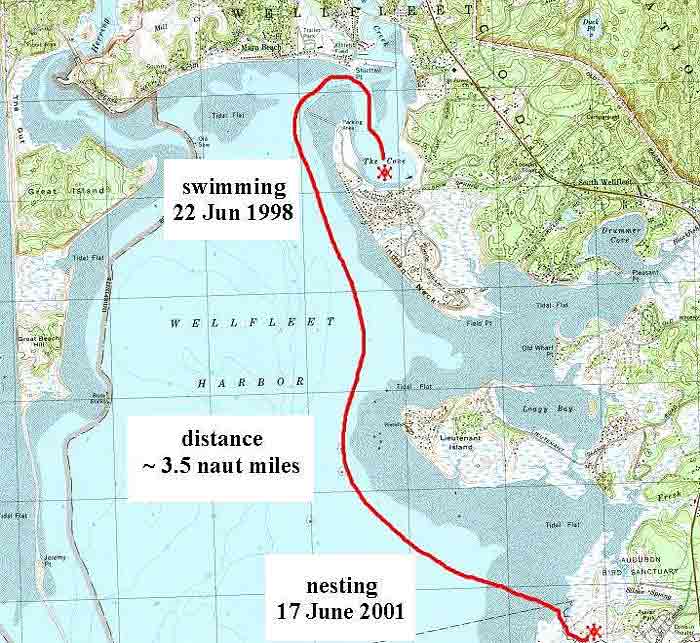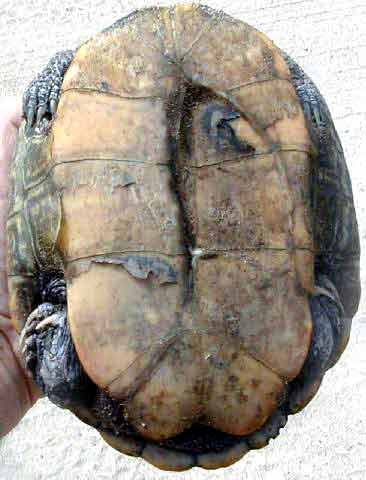Epics — 17 June 2001
As waves of nesting terrapins continued to wash ashore today, two stories stood out from the rest: one for its epic length, the other for its pure spunk.
Terrapin 629, a mature female, was first observed in June 1998 as she swam in the protected waters of Chipman’s Cove in Wellfleet Harbor. During the spring, the cove hosts a large terrapin population. Chipman’s Cove is very protected — like a hurricane hole, and its shallow depth allows a quick spring warm-up. We theorize that the cove provides a relatively safe spot for winter brumation and sports a very rich food source for gravid turtles.
Yet, we have discovered no nesting sites along the cove’s uplands. So, it is not unusual for Duck Creek or Indian Neck or even Lieutenant Island nesters to show up in Chipman’s Cove before and/or after the nesting season. But it was a surprise to see Terrapin 629 this morning nesting on the Audubon Sanctuary’s Goose Pond Trail off Hatche’s Creek in southernmost Wellfleet. The trek from Chipman’s Cove to this site is not only long (about 3.5 nautical miles), but it entails some rather complex tidal maneuvers. You may recall Wellfleet enjoys, depending on moon phase, tidal shifts of from 10 to 15 feet, with commensurate tidal currents. A turtle would need to flow out of the cove on an outgoing tide, play the currents in Wellfleet Harbor to avoid getting pushed into Blackfish Creek or out to Great Island, then ride the incoming tide into Hatche’s Creek to reach the Goose Pond uplands. The ride back would prove equally tricky. Our hats are off to #629 for one excellent piece of turtle navigation.


Our hats are off to Terrapin 882, too. She hasn’t set any long distance records — at least none that we know about, yet. Still, for pluck and endurance, she takes a back seat to no critter. Number 882 nests on Lieutenant Island’s Marsh Road, a dirt track just off the causeway. Some years ago, she was run over while on a nesting run, as evidenced by a crushed plastron and healed wounds to her rear limbs. Yet, undiscouraged and undaunted, she survived this serious injury and dares to crawl onto Marsh Road twice yearly to dig nests. Reduced predation and an abutting developmental marsh make this spot ideal for nests and emerging hatchlings. So, despite risks of vehicular encounters, Terrapin 882 exploits this important nesting spot in Wellfleet Bay. |
 |
 |

|